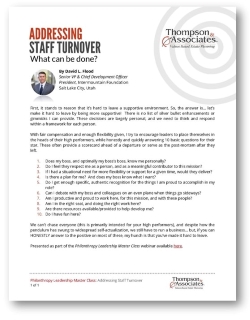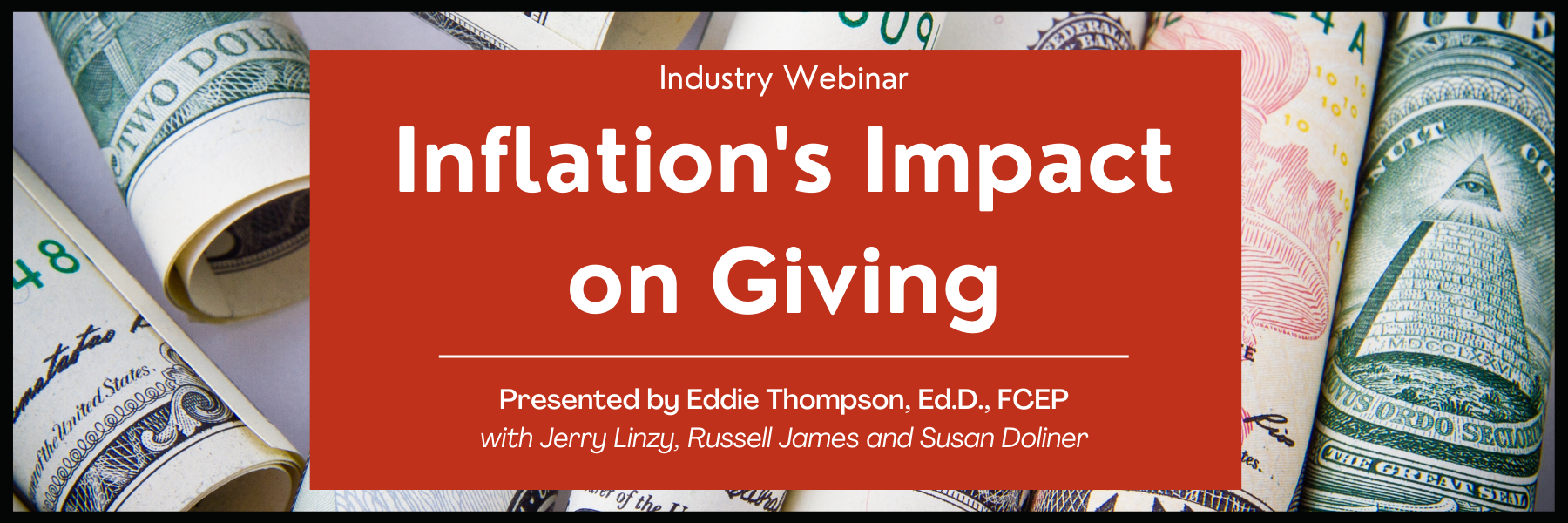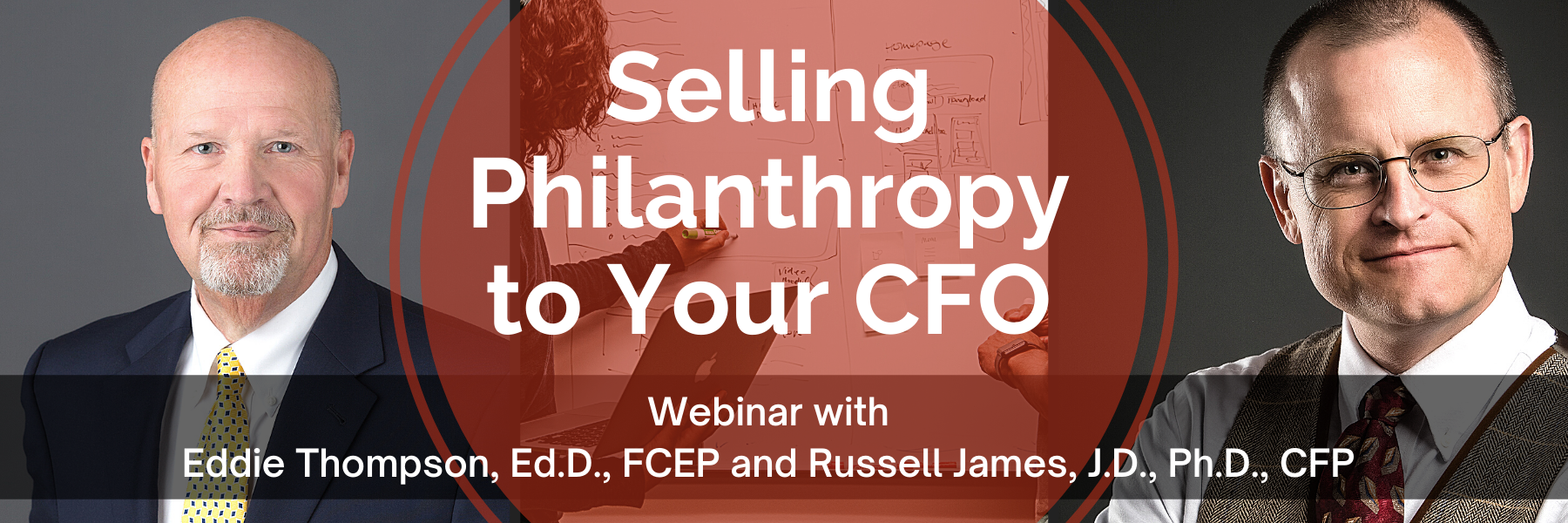Philanthropy Leadership Master Class
The economic, social and philanthropy landscape has changed dramatically in the last decade. Philanthropy strategy, donor acquisition and retention, multiple engagement platforms and the dramatic need for talent and professional development are priorities across the industry.
Eddie Thompson leads this 90-minute discussion with four industry leaders, Bill Littlejohn, David Flood, Susan Doliner and Randy Varju. They share their professional journeys, insights and lessons learned to help the next generation of philanthropy leaders meet the challenges of a new era and environment.
Watch Now
Questions Answered
In a world of many priorities, what strategies do you use in determining the top priorities for your philanthropic organizations?
Bill Littlejohn: The philanthropic component of the Sharp HealthCare’s Five-Year Operating, Cash and Capital Plan is a nationally recognized best practice. The plan is relied upon by Sharp’s outside rating agencies, Moody’s Investors Service and Standard & Poor’s, in their evaluation of Sharp’s financial strength and growth over each five-year horizon.
The rolling 5-year (add a year/take off a year) strategic and financial planning process involves all the entities, including the Foundations. The 5-year capital and operating financial plan is updated first, where the system projects:
- Net income from operations
- Borrowing
- Cash distributions from the Foundations for capital and operating projects and initiatives
The total amount available (the capital constraint) from the 5-year financial plan is then allocated to priority projects that are in the current strategic plan. The Foundations’ cash distributions are identified for priority capital and operating projects by entity (we know about them years in advance from the planning process). There is a cash distribution goal for every five-year period (current plan is $125 million in cash distributions over five years).
David Flood: In our health system, we have made it a point to closely align our Foundation’s messaging and outreach with the health system (as opposed to trying to raise for things we think we can raise money for, which is not maximizing mission potential). A few ways we have hard-wired this practice:
- Each development officer works with their respective hospital leader annually to define approved needs that we believe to be attractive for philanthropy.
- This same local CEO also shares a fundraising goal with their gift officer as part of their evaluation.
- As CDO, I also serve on the system’s Executive Leadership Team, so I am at the table where developing interests of the system are being discussed, while also sharing in the capital request committee. This creates a lot of alignment, while bringing the voice of the donor to the table.
Susan Doliner: We continuously monitor the strategic priorities of each service line. We determine funding needs at all levels from $10,000 to over $1 million. As we track those strategic priorities, we keep the senior leadership team at the hospital informed. Any initiative of significant funding value would need to flow through a vetting process with the finance and leadership team of the hospital. Until project capital or operation is approved, philanthropic dollars cannot be directed. This assures that philanthropy doesn’t drive decision making and hospital leadership has full responsibility for aligning and prioritizing strategic priorities. One-time expenses at lower levels can be approved at the service line level, as long as it doesn’t impact ongoing operational cost – which philanthropy cannot and will not own going forward. The vision statements for each service line are the most helpful documents we have.
Randy Varju: The first step is to align with strategic priorities that the system is committed to. Health Equity and Environmental Sustainability are two examples. The capital allocation process is also a key resource for us. This brings the bigger projects seeking funding at the system level through a vetting process that aligns projects with the direction of the system. In many cases, the larger building projects will incorporate a component of philanthropy in the proposal. For those projects that don’t meet the capital threshold, we look to the presidents in each of our regions or program and service line leaders to determine fundable initiatives at the 1, 3, and 5 year timeframe.
In a world of many priorities, what strategies do you use in determining the top priorities for your philanthropic organizations?
Bill Littlejohn: The philanthropic component of the Sharp HealthCare’s Five-Year Operating, Cash and Capital Plan is a nationally recognized best practice. The plan is relied upon by Sharp’s outside rating agencies, Moody’s Investors Service and Standard & Poor’s, in their evaluation of Sharp’s financial strength and growth over each five-year horizon.
The rolling 5-year (add a year/take off a year) strategic and financial planning process involves all the entities, including the Foundations. The 5-year capital and operating financial plan is updated first, where the system projects:
- Net income from operations
- Borrowing
- Cash distributions from the Foundations for capital and operating projects and initiatives
The total amount available (the capital constraint) from the 5-year financial plan is then allocated to priority projects that are in the current strategic plan. The Foundations’ cash distributions are identified for priority capital and operating projects by entity (we know about them years in advance from the planning process). There is a cash distribution goal for every five-year period (current plan is $125 million in cash distributions over five years).
David Flood: In our health system, we have made it a point to closely align our Foundation’s messaging and outreach with the health system (as opposed to trying to raise for things we think we can raise money for, which is not maximizing mission potential). A few ways we have hard-wired this practice:
- Each development officer works with their respective hospital leader annually to define approved needs that we believe to be attractive for philanthropy.
- This same local CEO also shares a fundraising goal with their gift officer as part of their evaluation.
- As CDO, I also serve on the system’s Executive Leadership Team, so I am at the table where developing interests of the system are being discussed, while also sharing in the capital request committee. This creates a lot of alignment, while bringing the voice of the donor to the table.
Susan Doliner: We continuously monitor the strategic priorities of each service line. We determine funding needs at all levels from $10,000 to over $1 million. As we track those strategic priorities, we keep the senior leadership team at the hospital informed. Any initiative of significant funding value would need to flow through a vetting process with the finance and leadership team of the hospital. Until project capital or operation is approved, philanthropic dollars cannot be directed. This assures that philanthropy doesn’t drive decision making and hospital leadership has full responsibility for aligning and prioritizing strategic priorities. One-time expenses at lower levels can be approved at the service line level, as long as it doesn’t impact ongoing operational cost – which philanthropy cannot and will not own going forward. The vision statements for each service line are the most helpful documents we have.
Randy Varju: The first step is to align with strategic priorities that the system is committed to. Health Equity and Environmental Sustainability are two examples. The capital allocation process is also a key resource for us. This brings the bigger projects seeking funding at the system level through a vetting process that aligns projects with the direction of the system. In many cases, the larger building projects will incorporate a component of philanthropy in the proposal. For those projects that don’t meet the capital threshold, we look to the presidents in each of our regions or program and service line leaders to determine fundable initiatives at the 1, 3, and 5 year timeframe.
In healthcare fundraising, building partnerships with clinicians is vital to fundraising success. What tactics do you all use to build relationships with clinicians to drive grateful patient referrals?
Susan Doliner: We have brief training sessions, 15 to 20 minutes in length, with small groups of physicians within their service line area several times a year. We also host grateful patient communication, education and other such sessions. The most impactful and inspiring tactic is to share testimonials from other physicians who have built relationships with grateful patients. This demonstrates the high ethical standards of that relationship and the impact and healing powers of giving as related to gratitude.
David Flood:
- Clinician engagement is a national best practice, but needs to be introduced carefully in order to avoid beginning with misconceptions around appropriateness and errant perceptions around clinicians asking for money at the bedside slowing or stopping progress before you start. Do the prep work. And educate first.
- After gaining support from your top medical officer, it begins with small group training to provide context and some groundswell. There are some consultants that can come in and do some of this training around referral, and outline the therapeutic value to patients who may express a willingness to be involved philanthropically.
- Expressing to clinicians that you are willing to assist them in raising dollars for their areas, or their research, but that they will need to be active participants/identifiers, places an attractive element of ‘what’s in it for me’ for the clinician, while helping to build clinician morale.
- Very rare circumstances aside, generally, you simply do not want your clinicians directly asking for money.
Randy Varju: We started with securing the support of the Chief Medical Officer in endorsing presentations throughout the system and at regional meetings. We followed up with individual meetings with key physician leaders and then identified the top physicians in specialty areas of priority by funding need. We also rounded with messages of purpose and gratitude during COVID and were able to provide funding for wellness and resiliency efforts. We also meet with priority physicians and go with a prepared listing of HIPAA compliant patients that have been screened through Wealth Engine. They provide a few details on a few of these names and it typically starts them thinking of others. We also have invited small groups of those identified for tours or service line updates.
Bill Littlejohn: We have several strategic and tactical goals for physician engagement.
- 50% of Core MDs engaged in philanthropy:
- Give
- Refer (we have implemented the grateful patient order set in Cerner for referrals.
- Champion
- 1/3 of Foundation Board Directors are MDs.
- MDs involved in all major Foundation clinical initiatives.
- MDs ask MDs.
- Annual meeting/briefings with Medical Executive Committees
MD Recognition for Philanthropy Engagement
To aid your board members, do any of you create personal partnership plans with trustees so that they agree where and how they can help for the year and your teams know how to support them? What do those lists of opportunities for participation look like?
David Flood:
- Certainly, it begins with every single board member giving an annual sacrificial gift commensurate to their means. A given, and it excludes event attendance, which is generally expected for major foundation events.
- Many put dollar goals on board members. We ask for 3 personalized introductions with individuals or organizations who are believed to have the capacity to help our mission, and primarily, who have the capacity to consider a major gift, if inspired.
- We ask to independently, or to partner in hosting a gathering annually.
- We suggest declaring an estate provision for the mission.
Bill Littlejohn:
PHILANTHROPY EXPECTATIONS:
The expectation of a Foundation board director is making Sharp HealthCare a philanthropic priority, which would include a combination of the following:
Join: Our family of donors through our Giving Societies:
- Become a Partner in Health through an annual contribution of $1,000 or more.
- Endeavor to be a Pillar of Philanthropy through major and lifetime gifts of $25,000 or more; specifically, for major campaigns and initiatives.
- Consider joining the Legacy Circle and provide for the future of Sharp and our community through an estate or planned gift.
Participate: In at least one of several Foundation annual fundraising events through sponsorship, underwriting, individual participation or outright contributions.
Engage: Lead or participate in two philanthropy engagement activities annually with prospective donors, such as special events, tours, educational forums or presentations, or individual meetings.
Champion: Lead, participate in or provide referrals for our major philanthropy initiatives and campaigns.
Steward: Acknowledge and recognize those who have contributed to Sharp HealthCare.
Collaborate: With Sharp and Foundation leadership to help identify and cultivate philanthropy relationships.
What, if any, advanced degrees or certifications really matter for philanthropy leaders?
Randy Varju: I have my CFRE, an MBA, and the FAHP. I think the CFRE is helpful and provides a roadmap for the skills necessary to advance in this career. I do pull from my MBA experience on a regular basis. I think that builds a level of stamina that’s needed to lead effectively. I’m still learning, reading, and exploring because of the habits that pursuing an MBA instills. I also feel the FAHP is a valuable designation for health philanthropy. It assures not just the skillset or knowledge, but the application of each in a manner that preserves health philanthropy’s relevance in a challenging and changing climate.
Susan Doliner: I’m a big proponent of the AHP fellows certification because the work to prepare for the exam and the experience validates the Skillset required to be a philanthropy leader. It’s also very helpful to have a planned giving officer with financial credentials, and/or a legal degree.
Bill Littlejohn: I only have a BA in Economics, no graduate degree or certifications. I don’t have an opinion one way or another regarding certification, as I mentioned I believe the most important characteristics for philanthropy professionals are people skills, work ethic and attention to detail. And growing competency as a professional through experience.
David Flood: I found great value in taking graduate courses and earned a certificate in Fundraising Management from NYU, in addition to other graduate classes. This exchange and diversity of perspective/ideas has been invaluable. I also have a Masters in corporate and public communications, which has been good for me, and is required within some sectors for top jobs (Healthcare, Higher Ed,). So, I think balancing contemporary communications, some business/finance acumen, and exposure to technology with all that is happening up ahead would serve you well.
What do you think is more appropriate - Office of Development or Office of Philanthropy?
Bill Littlejohn: I prefer Office of Philanthropy. We have an office of Business Development, which is not related to philanthropy or fundraising.
Susan Doliner: I feel that development is the act of fundraising at basic levels from appeals to events, and is much more transactional than the philanthropic initiatives that occur in a robust philanthropy office. There, major gifts, estate planning campaigns and long-term strategic priorities, are set and acted upon. In the academic world, the term advancement would replace philanthropy for consistency across the sector.
David Flood: Development, Philanthropy, Advancement- there are pros and cons for each, and I don’t think it gains or costs a dollar for the mission. If pushed, I would say that I have taken a shine in recent years to Philanthropy, because I think more people know what it means today than they did 10 years ago, and it sounds nice. I get that ‘Development’ can mean a lot of things, which is why some like the flexibility of it.
Randy Varju: Office of Philanthropy helps avoid confusion with business development or others. You might get a meeting quicker with the development title, but if you get the meeting with philanthropy in your title, you’re likely to find the content of the meeting more productive. If they know your role and are willing to meet, they are more likely interested in supporting the initiatives you’re coming to discuss.
What is the risk of AI to the philanthropic sector? Is it a blessing or curse in your opinion?
Bill Littlejohn: The risk of AI, digital and virtual fundraising poses the danger of losing the personal connection with donors over an extended period of time. The donor can become an email address or text number. It is wonderful to have so many platforms for connection and they can be an advantage, but there are limits to attention and connection. We all get excited about an open rate for an email but realize that very few actually linked through to a story or message, it is a significant disconnect.
Randy Varju: I tend to think it will help more than hurt. We’ve done wealth screening for years. But if we can layer in other measures of affinity or develop donor profiles based on previous patterns, the data sifting could yield better results than we currently have access to.
Do you apply the HML performer process with your teams?
Susan Doliner: Yes, we apply HML performance process with our teams. We measure and track timely visits, proposals submitted, identification of new donors, potential donors, and dollars secured.
Randy Varju: We do. This is an HR process that we have used to calibrate the team. It can be time consuming but is valuable in getting cross-functional feedback on team members. It also identifies high performers for growth and retention.
What is the best pathway to increase staff professionalism?
Randy Varju: Skill development through an individualized growth plan. This needs to include both identified aspirational areas as well as key skill development needs. It sends the right message when you can map out the next two years and illustrate how you’re partnering to advance their skill and career.
David Flood: First of all, emulate what you are suggesting is the standard for increased professionalism. Second, don’t chase trends. If you are a leader, rather than being led by what the world tells you is proper today, share what you want. What do you expect? By example, I expect people to dress well in the office, and to be formal when with external stakeholders (I don’t call it casual. Just look nice and professional. If you don’t know what that means, lean towards being overdressed). Be articulate. Be knowledgeable. Always return calls and follow-through promptly. Be concise. Be kind. Be proactive. Help the team. Always look to grow your role, so if we had to replace you, we would be hiring at a whole new level than when you arrived. Discretion is invited, as we all have different styles, and most show great discretion, especially if you ask for the framework.
Why is Advancement and Promotions such an issue?
Bill Littlejohn: Most philanthropy and fundraising programs are relatively small – the philanthropy team at Sharp is less than 40 out of a workforce of 19,000. So, it can take time to get promoted if there are few roles to be promoted to. People leave for promotion or advancement. For years, most fundraising professionals were generalists, gaining knowledge and experience in all types of fundraising and development, over a number of years. Now there are more specialized roles and therefore less people qualified for those roles due to less experience or time in a generalist role. It has become increasingly difficult to create and guide people along a true professional pathway to leadership in philanthropy. I spent my first nine years in fundraising development at the American Cancer Society working in every manner of fundraising, few people today want to take on that kind of work over that long a period of time in order to advance.
The other big issue is misaligned expectations for development officers, and tenure ends up being short when those expectations aren’t met.
Can you work yourself out of the opportunity to advance?
Bill Littlejohn: Certainly, if you remained “siloed” in a role or position and not expand experience in other areas, you can end up in the same role for years. And that might be a good thing. Experienced and high-performing major gift officers may not be the best candidates for the chief development officer and provide more value to the institution in their role.
Would you be willing to be a little vulnerable and share some things you each are working on in your continual desire to be an outstanding philanthropy leader?
Bill Littlejohn: Absolutely, I am a facilitator of philanthropy and represent the institution first and my fundraising role second. I also realize I am a better fundraising professional when I practice it with others.
David Flood: A good question, and all leaders have things to be working on. In my case, front of mind, I am trying to navigate the realities of generational and COVID-borne workstyle preferences, trying to balance high performance with flexibility and work-life balance for the team. This is difficult, because I view my work as a vocation – as part of my life in a good way, and I am invested at that level. I need to balance my view or expectation that others would want or be expected to be invested themselves at that level, with whatever a more reasoned and contemporary standard may dictate, but without compromising trajectory. I will continue to work on balancing that pendulum. Not there yet.
Randy Varju: I’d say the ongoing challenge of broadening what we consider success. Is success only hitting the number? Or instead, is success being able to say a gift to us is the best gift experience every donor has ever made? They feel the impact and see how the gift changed the lives of others. What does that look like or what would we need to do differently to claim it?
Susan Doliner: We are working hard to transition our culture of philanthropy to a culture of gratitude which further engages Frontline staff, especially physicians across the organization. This will require a great deal of one-on-one education with our clinical colleagues. On a personal level, I’m taking more risk with transformational donors and making contact as rapidly as possible instead of talking about strategies for months, while other organizations find their way into the living rooms of leadership donors sooner.
What is the best example of a direct mail appeal for planned giving? We send emails, but our donors prefer analog
Bill Littlejohn: The overwhelming majority of planned gifts are still bequests or estate gifts which are often simple to prepare. A message of leaving a legacy or helping envision the future through a will or trust is a powerful message. The philanthropy program can help donors become philanthropists and achieve a dream or legacy. Keeping it simple.
“The power of philanthropy is where people of vision and generosity, make possible the achievement of dreams of people of skill and dedication, for the betterment of all.”
Engaging Institutional Allies -- are the allies donor prospects or colleagues? Or both? How are allies different from cultivating and stewarding relationships?
Bill Littlejohn: Allies for us are the executives, leaders, Board Directors, physicians and staff across Sharp HealthCare. We have 25,000 staff, MDs and volunteers in the organization. One third of our Foundation Board Directors are MDs. Sharp is the engine of philanthropy and allies have great influence on our donors, most of whom have been patients or have a relationship with Sharp. Of course, all our allies are donor prospects as well.
What are the two or three challenges in leading a high-performing team and program?
David Flood:
- Being a chemist to inspire a consistent level of ownership across the team;
- Battling recruitment of the team in light of a shortage of true talent and growing salaries;
- Mentorship of newer hires in the age of remote work.
Susan Doliner: Communication and the hybrid/remote staffing structure of post Covid continues to be a significant challenge. Productivity is equal if not higher in a hybrid model yet, communication can be slow and cloudy. In addition, today’s workforce is looking for rapid rewards, recognition and promotions, much faster than prior generations.
What are the two or three challenges in leading a high-performing team and program?
David Flood:
- Being a chemist to inspire a consistent level of ownership across the team;
- Battling recruitment of the team in light of a shortage of true talent and growing salaries;
- Mentorship of newer hires in the age of remote work.
Susan Doliner: Communication and the hybrid/remote staffing structure of post Covid continues to be a significant challenge. Productivity is equal if not higher in a hybrid model yet, communication can be slow and cloudy. In addition, today’s workforce is looking for rapid rewards, recognition and promotions, much faster than prior generations.
What are the best ways to improve donor acquisition and retention?
Susan Doliner: In regards to retention, consistent recognizable/branded communications about the impact of one’s gift – no matter the size and no matter the number of times a person has given throughout the year – matter a great deal. What was the impact of my gift? How was it spent? Did it save lives? Did it improve the quality of care in my community? Can you tell me a story about one person who benefited as my gift was added with those of others?
Randy Varju: Strategy and persistence. Strategy can drive your list pull. The better the alignment with the audience, the better your response. As an example, don’t look just at recent patients, try determining patient loyalty based on the number of patient interactions. Match this with wealth screening and you have a list more likely to deliver. Better matches also lead to better retention and quicker upgrades.
How does one create a successful philanthropic strategy?
Randy Varju: A successful philanthropy strategy needs to be aligned with the institution’s strategy and vision, needs to have an articulated and appealing plan to achieve it, and needs to be something donors see your institution as uniquely capable of delivering. Why this? Why now? Why us? The structures, assignments, goals, and timelines all grow from here.
Do you have strategies to maintain stability and momentum among turnover? There's turnover internally within the Philanthropy team and turnover in external key partners, like clinical chiefs and chairs, hospital exec team and even board members that have been key influencers.
Randy Varju: It’s important to help partners understand that turnover happens for many reasons. Some turnover is good and helps the institution go in new directions. It can also be an opportunity to get the new person in front of key donor audiences. While we can only manage the response to turnover in system leadership, there are ways to keep high performing foundation team members from straying. You can expand their exposure or reach through committee work or assignments. You can identify and share the skills you can help them develop and put a plan in place to get there. Also be sure to share that it doesn’t mean a guaranteed promotion – that part is up to them to pursue when available. Also, be careful to realize that there will likely be a time when leaving is the best thing for their career. Supporting that choice can be hard, but it’s true leadership.
Susan Doliner: We assign leadership gift officers to every service line so when there’s turnover within clinical areas, Philanthropy orientation is immediately part of the onboarding process. Internal team member turnover is more difficult as the workload increases significantly as staff members cover for the open position. Also, considerable leadership time is spent on the search process. We have a robust intern program that helps us with some backfill at certain levels on our team when turnover occurs, particularly with gift processors, annual giving and event support.
How does one drive the improvement of philanthropic and institutional culture?
David Flood: It begins with an acceptance at the top that philanthropy is part of the larger organization’s culture, and should be part of their identity. The mission CEO needs to embrace the value of a philanthropic culture beyond the money-getting part. The rest of the organization, with hair on fire with all they have to do, prioritizes to the CEO’s priorities. In addition, the highest philanthropy officer should optimally report to the CEO, and be part of the top planning body for the organization. Everyone roots for philanthropy, and everyone wants philanthropy to happen. Some even demand it. But, beyond that, does the CEO proactively prioritize and participate in it, or is philanthropy really just an ugly but necessary ‘bolt-on’ to the organization? Earn and/or get buy-in of the C-suite for a deeper-rooted culture of philanthropy.
Randy Varju: By leveraging every opportunity you get or can create. How do you currently use your team member giving campaign? Do you use it as a means of meeting one-on-one with your ELT to solicit their gifts while sharing the impact of philanthropy for the previous year and the plans for the year ahead? Do you use the department meeting presentations as a way of sharing the role of philanthropy as part of the healing process and as a way for our patients to join caregivers at the bedside in treating others? Do you script your CEO or hospital president with messages that underscore the importance of volunteer and donor efforts? It requires consistency and persistence. But it feels great when you start seeing the things you’ve been saying popping up in places on their own.
What are the best practices for achieving support from corporate marketing?
Bill Littlejohn: The philanthropy program is often the best source for articulating institutional vision and achievement and marketing can assist in both the creation and dissemination of that vision. The philanthropy program is also the institutional historian and storyteller, and working with marketing can bring those stories and legacy to life, which ultimately impacts the benefits the image of the institution.
David, you have centralized your Board and consolidated governance. How much time and money has that saved your organization?
David Flood: I don’t know how much centralization has saved, or if it has (I actually wanted to spend more, and often reallocated anything we saved on something in one area for something else that could be of value to our growth). That was never really the emphasis, as compared to how much we could positively impact revenue. That’s what matters. By example, back before our shop centralized over 9 years ago, we were event driven, doing things differently in different locales, duplicative functions, with some major gift activity raising a total of $18-20 million. Synergies and structure changes have elevated our performance steadily since we consolidated to more of a rolling campaign emphasis raising close to $90 million for the past few years, and over $100 million in this past year (total production $120 million). On the expense side, we have improved through consistent fundamentals from around 50 cents to raise, to the mid-teens in that same time. Always be efficient, and look for ways to save, but centralization or consolidation should still be about growth of the top line while prioritizing highest return activity with appropriate resources.
Bill, how do you measure the activities of the Board that are outlined on slide 14?
Bill Littlejohn: We certainly track Board giving in our database, as well as participation in committees, groups and initiatives. Yet we don’t have a Board “report card” or detailed grid. We want our Board members to have great Sharp Experiences and gauge accordingly. We don’t do a formal Board survey, but have discussions with individual Board members about their experiences and if they want to continue or ways for us to improve.
Communication continues to be a highly valued trait across our team and our organization. What's your approach to transparency and information sharing with hospital leadership as well as within the internal philanthropy team?
Susan Doliner: I’m a big believer that information is power. Once there is trust at the highest level and an understanding that confidentiality must be maintained, those that need to know should know. If it’s gossip and hearsay, keep it to yourself. We all wish to move the donor strategy forward, however we MUST be certain the sharing is within ethical standards and HIPPA compliant. The communities we live in can be small, so caution should always be taken with regard to need-to-know, coaching and sharing information with the internal philanthropy team, board members and volunteer leaders. It’s ALWAYS best to directly ask the donor with whom you can share news of their gift, from your team to executives, internal PR, external press, Board, etc. Sometimes donors are ok with sharing that they will name a program or space yet not disclose the amount. Make sure you know the parameters and stay firm with meeting those requests.
Randy Varju: Honesty, timeliness, consistency, and accessibility. This is not something that comes with your title. Trust is earned with credibility and transparency. How you communicate is pivotal to managing in today’s environment of constant change. Communicating frequently and creating a forum for asking difficult questions has been helpful for me. Also don’t shy away from the tough questions. It only creates more concern. I share what I know and assure the team I will pass along additional information as available.
What are the historic modeling tools that Sue mentioned? She said there are tools that can show you who your donors were when they were younger.
Susan Doliner: There are consultants who are able to take our databases and look at donors who give over X number of years, along with growth in their giving and advancement in their engagement with the organization. They may have started out as $25-$100 donors 25 or 30 years ago and are now making gifts and estate plans. Significantly tracking those early moves from years ago can profile those you might want to focus on today that may have not yet showed their hand. This can be done through modeling algorithms. I believe that most philanthropic consulting firms can provide the service nowadays by doing large database evaluations or smaller annual giving program reviews.
Bill, if your organization does not have a high quantity of provider donors, even after conversations, how would you better engage with doctors?
Bill Littlejohn: We have a strategic goal of physician engagement so it covers a larger group. We work to make physicians allies in the philanthropy program, not just donors or referring patients. They serve on our Foundation Boards, champion clinical initiatives and provide advice and counsel for engaging their colleagues. Philanthropy can ultimately impact a physician’s practice and we can assist with their vested interest. They become colleagues in elevating philanthropy.
For a development officer looking to grow, how should you approach conversations with leadership when you want to have a more active role in principle gifts? It is my experience that most of these gift strategies are led by the executives which, in some cases, can be a list growth opportunity for the development officer.
Susan Doliner: Principle gift strategies and actions are held very close to the major gift officer assigned, as well as the executive owning their relationship. A good place to start is to offer to draft bullets for strategy next steps. As part of our career, we need to understand that we’re not always the right person to be in the room but knowing that you played a role in the strategy will help build trust with your executive and you should see some handoff of relationship stewardship and follow up. They will be handed off to you as you prove that you understand the strategy required for this particular donor.
David Flood: Success at the level you are at is the best calling card for growth, regardless of how long you have been there. If you have been successful, meaning you exceed what was hoped of you in bringing in money, not doing lots of work, or meeting lots of people, then this is an important discussion to have with your boss. As you do, you will want to express your understanding that escalation and hand-off to executives is expected, good business – not a failure. Your question seems to make this sound like executive elevation is a negative. Be comfortable knowing that your job would be to bring in relationships and elevate them to the point where the relationship can be maximized for the mission, while staying close. If you are the best relationship, then you are the closer. Ask your boss clearly and confidently, ”I have done well, and feel I am ready to begin working at the principle gift level. Can you help me begin that exposure? I want to grow here and make my presence here a career and not a job.”
As someone who is leaving a long tenured career with a smaller entity for a new system, what is the best advice you would give to start with a new donor and system to be successful and start another long tenured career.
Randy Varju: Think back and assess those relationships that were most valuable in assuring your success and long tenure. Building trusting relationships starts with being identified as capable and competent. It helps to start with those that will build momentum and credibility for you. Small or big shop, you’ll be surprised how similar the dynamics are. It’s mostly done at the individual level and can sprout from a few key meetings to get things moving in your favor.
Susan Doliner: Congratulations on a long career at a smaller entity and making the move to a new system. The best advice I could give you is to spend time immediately with existing donors in the new system and setting strategy with your leadership peers at the system. Since you are in a leadership role, I would assume you have staffing oversight and can take some time to assess and use your best judgment focusing yourself and your team on a small list of strategic priorities. Remain laser-focused on your top donors for the immediate future as you settle in. Embrace the big picture of the system and think with a systemwide impact at all times.
About the Host & Presenters
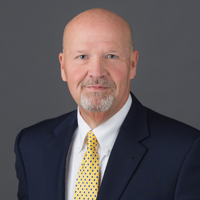
Eddie Thompson, Ed.D., FCEP
While Eddie attended Vanderbilt University in the 1970’s for his doctorate degree, the country was experiencing hyper-inflation. Inflation was rising faster than universities could raise tuition. Eddie wrote his dissertation on fundraising in higher education comparing the 13 most successful organizations with 13 less successful organizations.
From his findings and own experience working in development shops, Eddie formed Thompson & Associates in 1996 with a unique values-based estate planning model. It provides a way for people to dedicate the necessary time to consider important life decisions and to engage in thoughtful discussion that leads to optimal results for supporters, their families, and their favorite organizations.
Eddie has planned thousands of estates, which has generated billions of dollars to charity during his thirty plus years working with nonprofits. He speaks to organizations from coast to coast on successful fundraising techniques, nonprofit management and charitable estate planning and has garnered many honors during his distinguished career.
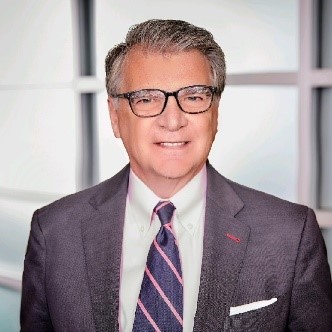
Bill Littlejohn
Senior VP and CEO // The Foundations of Sharp HealthCare
Bill Littlejohn is one of the nation’s leading health care philanthropy professionals. With more than three decades of experience, Littlejohn has led and directed philanthropic programs that have generated nearly a billion dollars.
Littlejohn joined Sharp HealthCare in 2002 as senior vice president and chief executive officer of the Foundations of Sharp HealthCare. He oversees the entire philanthropic program for Sharp, and under his leadership, Sharp has generated more than $300 million in philanthropy and launched ENVISION: The Campaign for Sharp HealthCare, a $2 billion investment in the future of health care in San Diego.
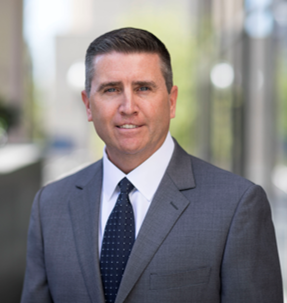
David Flood
Senior VP & Chief Development Officer President // Intermountain Foundation
Recognized as an industry thought leader, Dave Flood shares his knowledge with charitable organizations and forums throughout the United States and abroad.
Dave joined Intermountain Healthcare in 2013. As Chief Development Officer, Dave drives innovation through the direction and oversight of Intermountain Foundation, a comprehensive healthcare fundraising network designed to meet needs of Intermountain’s hospitals, and related healthcare services.
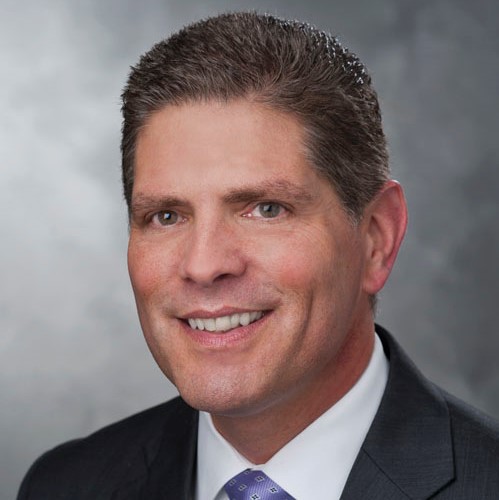
Randy Varju
Foundation President and Chief Development Officer // AdvocateAurora Health
Randy has executive responsibility for the vision, planning, implementation and management of charitable giving and fundraising for all 27 Advocate and Aurora hospitals, and system-wide development initiatives.
Randy has served the not-for-profit sector in development roles for three decades, initially in the human services sector with Easter Seals and United Way and later in higher education with institutional advancement for Lewis University. In 1999, he moved to the health care sector, joining Advocate Charitable Foundation as vice president for development for South Suburban Hospital. In 2002, he transitioned to Advocate Christ Medical Center and Hope Children’s Hospital as vice president of development.

Susan Doliner
Vice President of Philanthropy // Maine Medical Center
Sue is one of the nation’s leading health care philanthropy professionals. Sue has led philanthropic programs that have generated nearly half a billion dollars throughout her career.
Sue joined Maine Medical Center in 1990, building a distinguished career in philanthropy over more than three decades, including shaping one of Maine’s most comprehensive development programs at Northern New England’s largest health care provider Maine Medical Center and The Barbara Bush Children’s Hospital at Maine Medical Center.
Let's Talk
The craziest thing that can happen is nothing.
Resources
Blog
Podcasts
Client Login
Copyright 2025 Thompson & Associates. All rights reserved. Privacy Policy & Disclaimer


